Nexus 7 (2013) - Mini Review
by Brian Klug on July 27, 2013 12:54 AM EST- Posted in
- Tablets
- Snapdragon
- Qualcomm
- Android
- Mobile
- APQ8064
- Nexus 7
- Android 4.3
Last year the Nexus 7 debuted with a Tegra 3 SoC, which for reminder consisted of a 4+1 architecture of ARM Cortex A9 CPUs, with the 4 A9s built on 40nm G, and the +1 “shadow core” A9 built on 40nm LP (TSMC’s 40 LPG process), accompanied by ULP GeForce GPU with 12 cores running at a max GPU clock of 416 MHz. The exact SoC was NVIDIA’s Tegra 3 T30L, which could run one A9 at up to 1.3 GHz and all A9s at up to 1.2 GHz.
Rather than the relatively logical upgrade path of going to NVIDIA’s Tegra 4 SoC (I’ve heard all manner of speculation about what happened there), the new Nexus 7 switches to Qualcomm’s APQ8064–1AA, a version with 4 Krait 300 CPU cores (yes, Krait 300, not 200) running at up to 1.5 GHz and Adreno 320 graphics. Rather than use a PoP and LPDDR2, this specific APQ8064 variant goes to PCDDR3L–1600 MHz instead, including 4, 4Gb discrete 1.35V SK-hynix DRAM devices off to the side (more on the opposite side of the PCB) adding up to 2 GB of RAM. Qualcomm's Snapdragon S4 Pro and Snapdragon 600 branding gets confused here, although Qualcomm is calling the APQ8064 inside the Nexus 7 (2013) S4 Pro, it's more like an underclocked or lower binned Snapdragon 600.
At this point APQ8064 is probably the most well understood SoC in recent memory (so much so that I’m pining for devices to include something different just from an academic perspective) so I’ll spare the very verbal discussion about its performance.
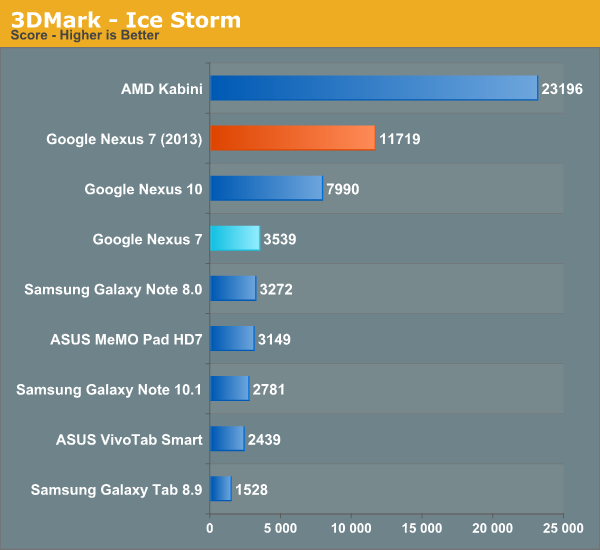



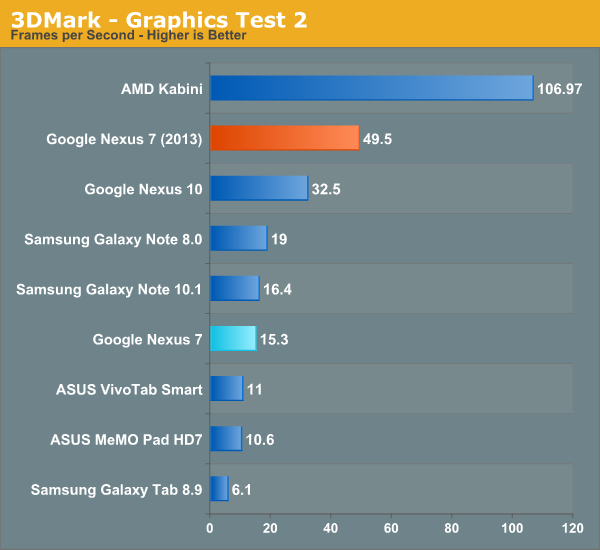
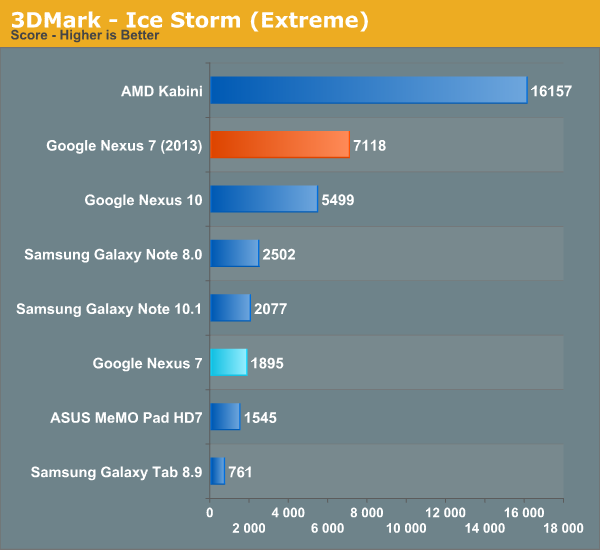

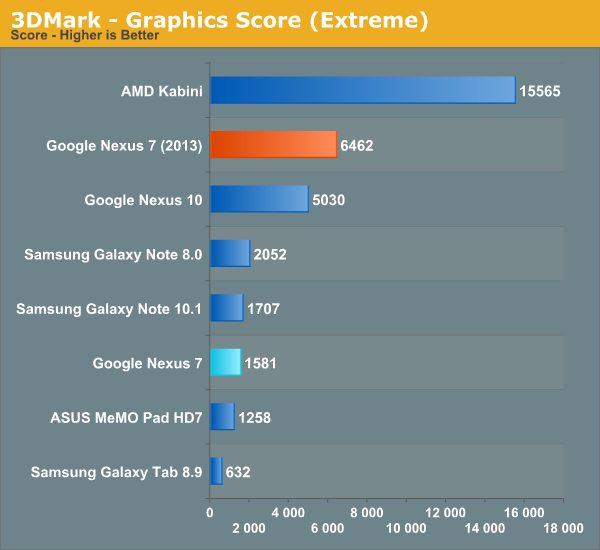

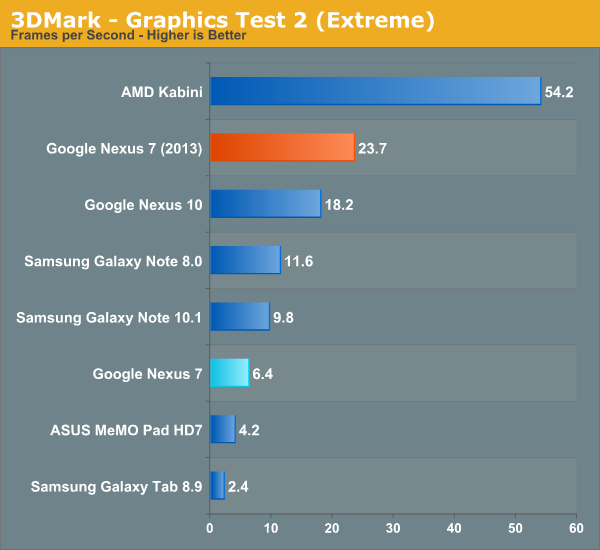


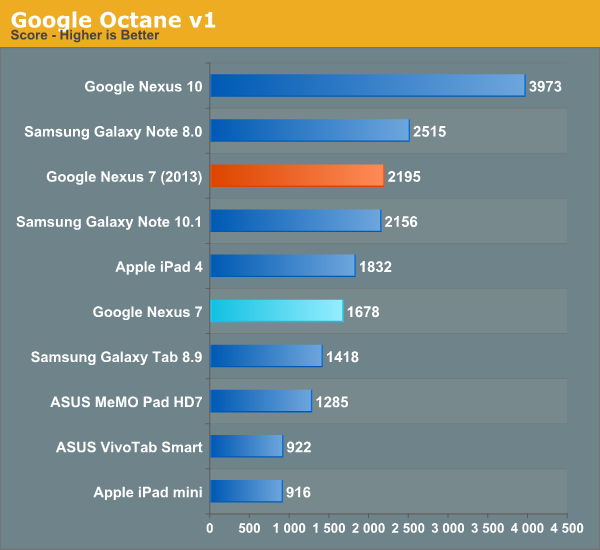
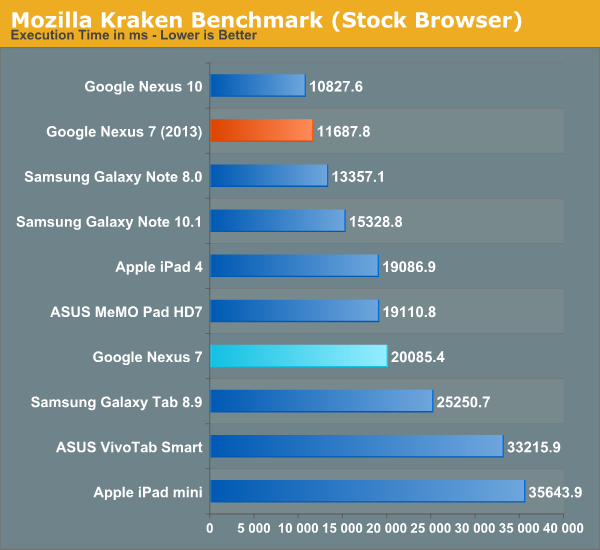
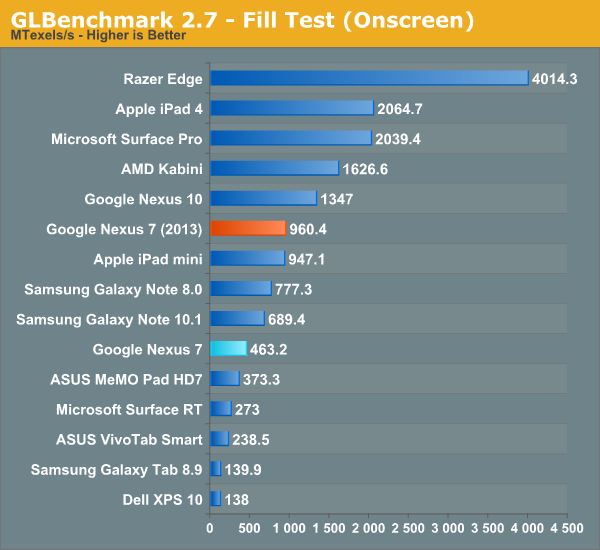
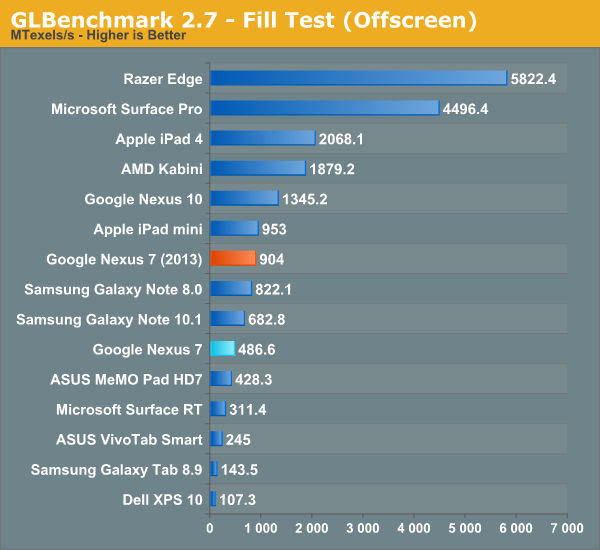
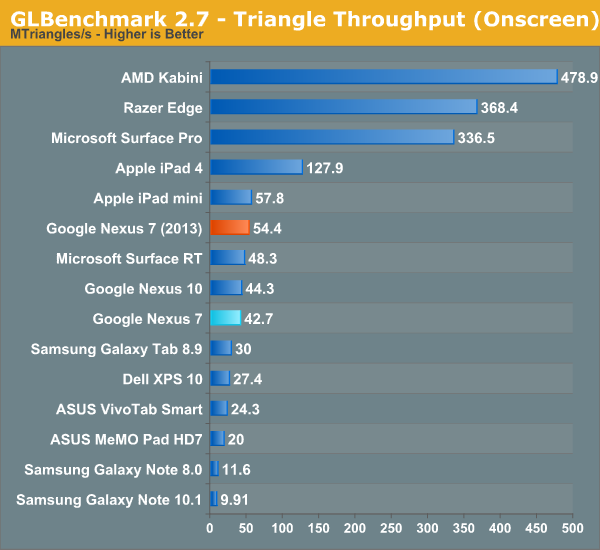
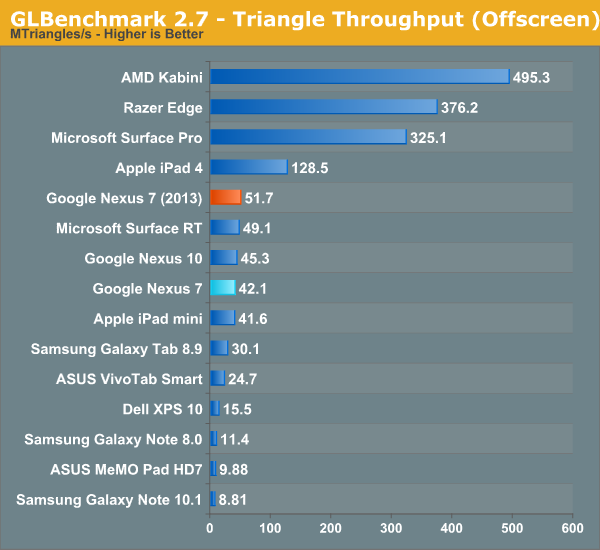
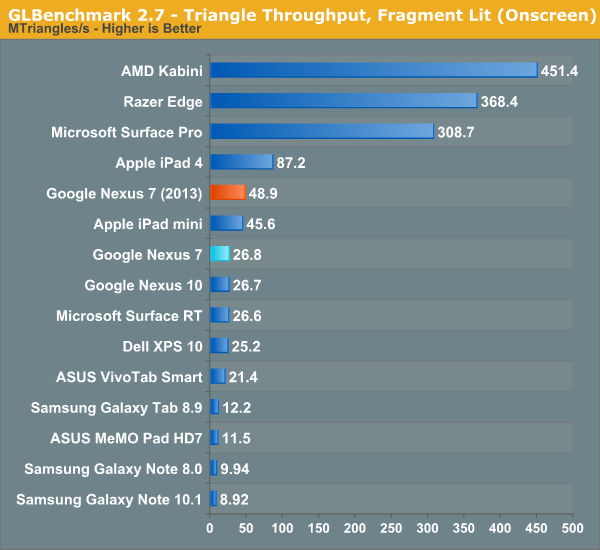
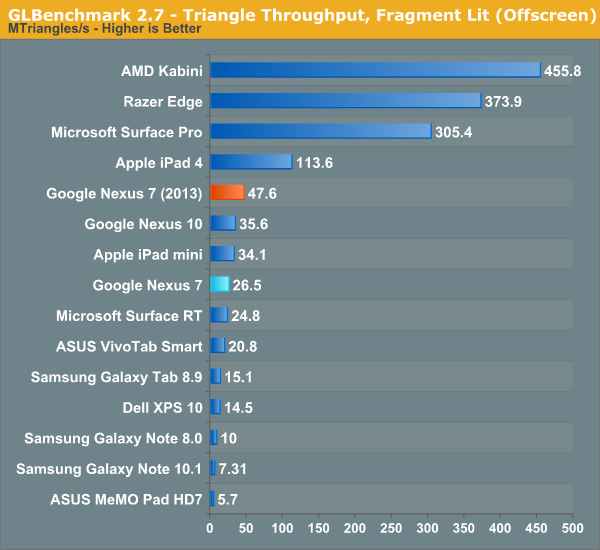
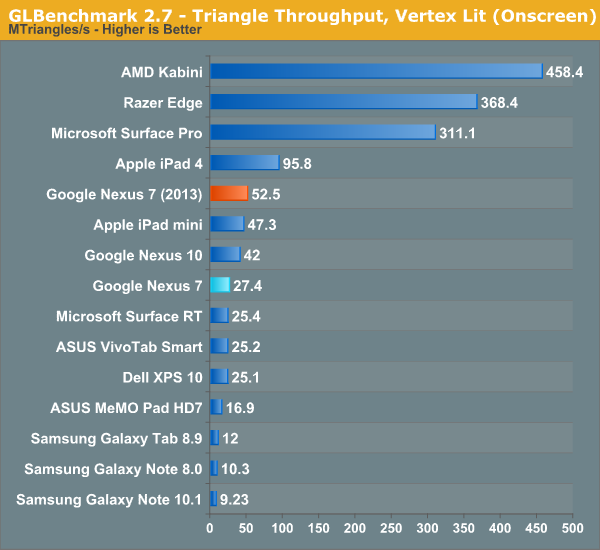
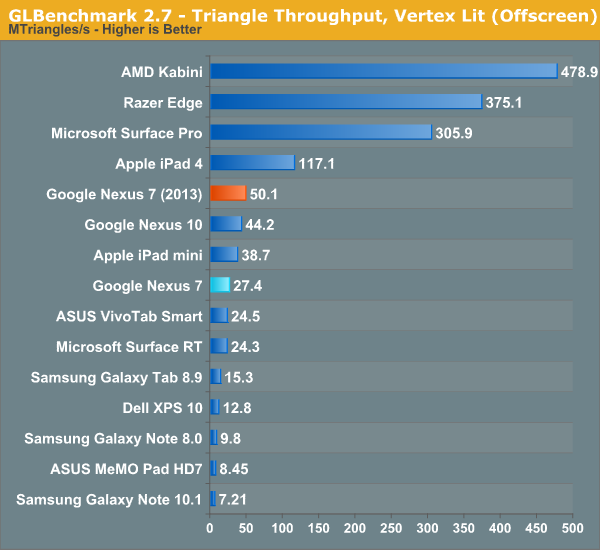

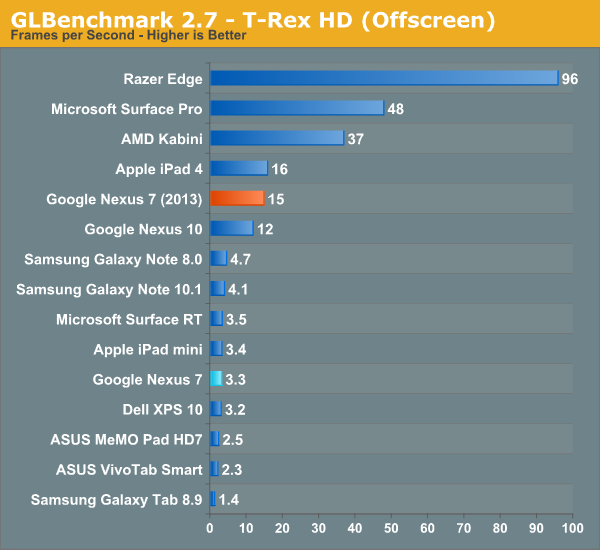
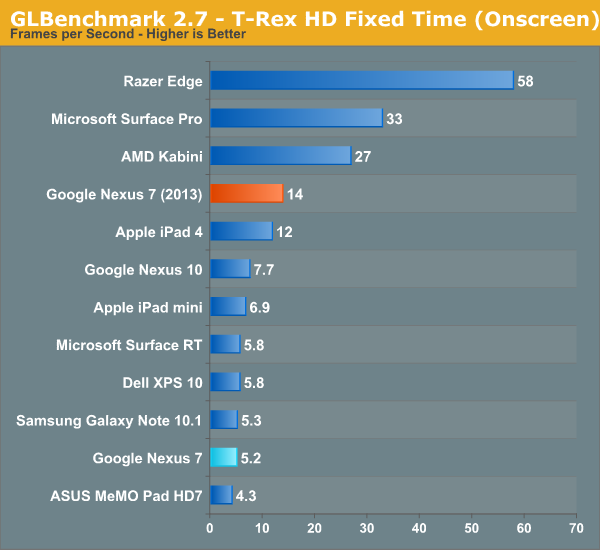
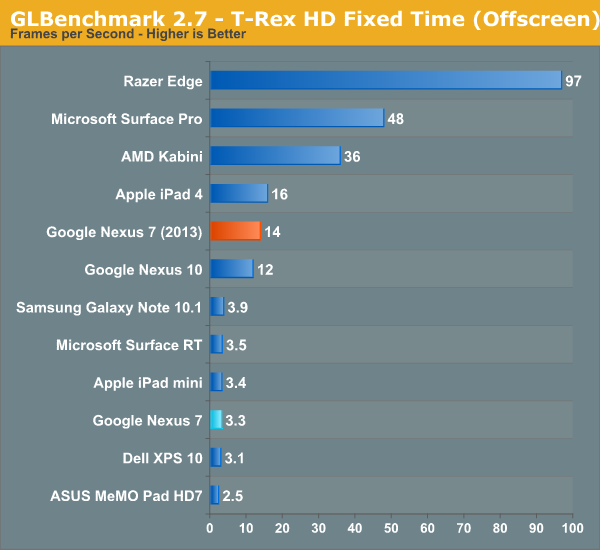
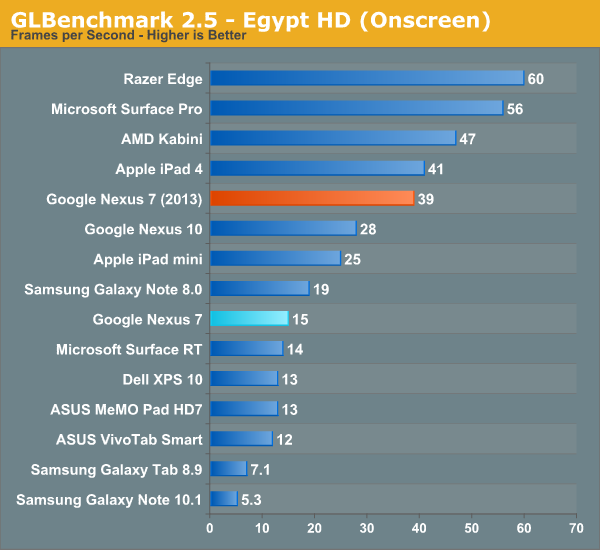
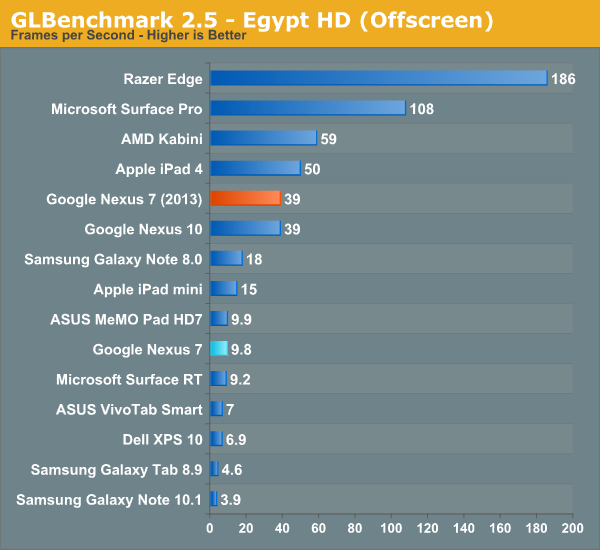
Suffice it to say, moving from 1.2–1.3 GHz Tegra 3 to 1.5 GHz APQ8064 represents a big jump forwards in performance. Google claimed 1.8x improvement on CPU performance, and 4x improvement on GPU, which gets validated pretty much consistently through the benchmarks. I never felt like Tegra 3 was a slouch by any means (performance was more I/O bound on the OG Nexus 7, which we’ll talk about in a moment), but the new Nexus 7 has ample performance for the considerable increase in screen resolution.
Dat eMMC
It wasn’t any secret with the original Nexus 7 that much of the real world performance was gated by storage I/O throughput – we wrote about it after all – and storage performance was a common complaint while multitasking on a few other previous and similar era ASUS tablets. Most of the time performance was acceptable, and for $200 you can’t complain too much about things, the issue was that further on in the life of the tablet performance began degrading somewhat notably, leading to complaints.
Obviously the first thing I did on the Nexus 7 (2013) was run Androbench with the same 100 MB settings to test and see what out of box I/O performance looks like. Things are much better with the new Nexus 7 than they were with the previous one, so at a high level all is good.
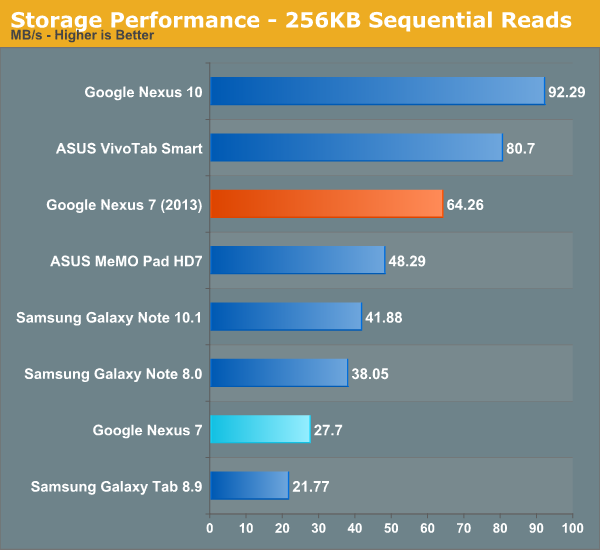
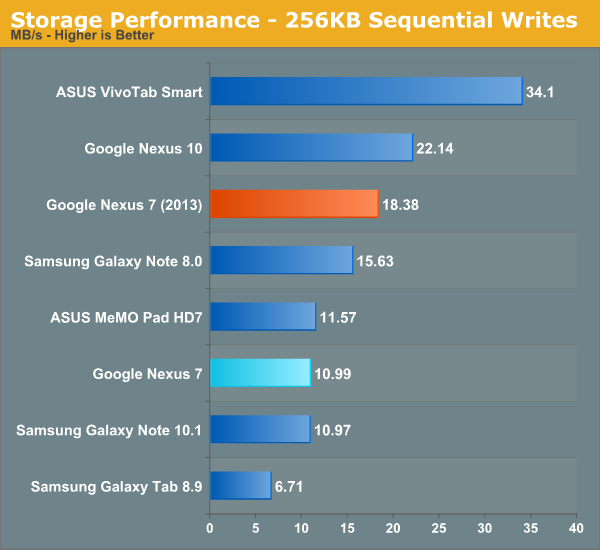
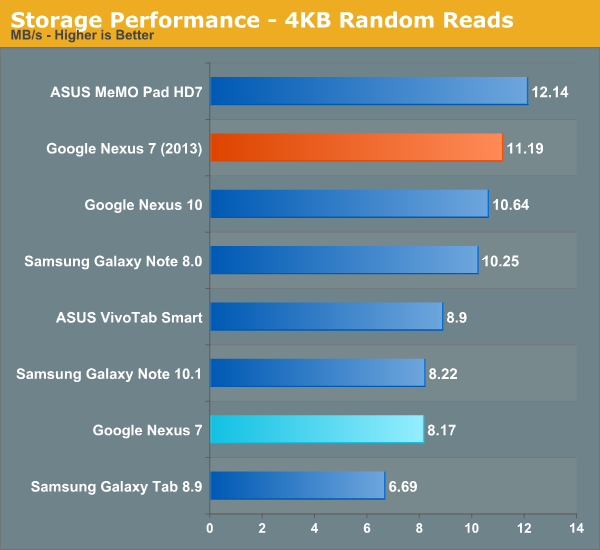

The story actually is a bit more involved however. One of the big problems was that the slowness which occurred with the prior Nexus 7 took device aging to appear – it was great for the first few months, but after you started loading it things tailed off. The new Nexus 7 (2013) with Android 4.3 includes support for fstrim, essentially idle garbage collection, which TRIMs the eMMC when a few conditions are met – the device is idle, screen off, and battery above roughly 70-percent. I’m told that TRIM support has been part of the eMMC standard since around version 4.2, it was just a matter of enabling it in software. The result is that the new Nexus 7 shouldn’t have these aging affects at all. Better yet, fstrim support has also been added to the old Nexus 7 with as of the Android 4.3 update, so if you’ve got a Nexus 7 that feels slow, I/O performance should get better after fstrim runs in the background. I'm checking on whether the other Nexus devices have also had TRIM support added. I would consider the slow storage aging problem fixed as of now, and Google took the eMMC and storage I/O performance issues with the previous Nexus 7 to heart for this version.


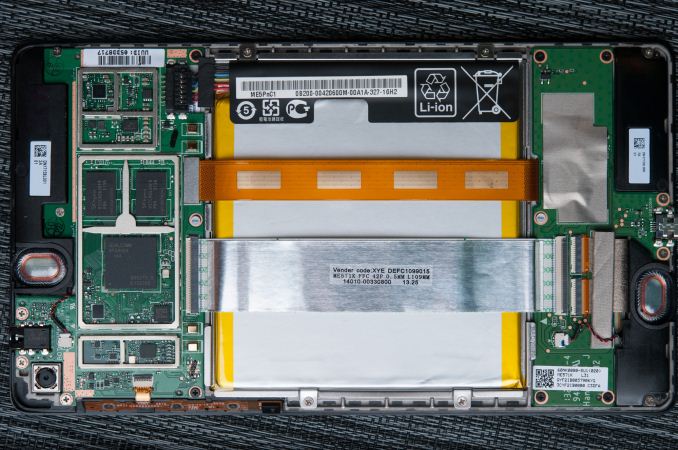
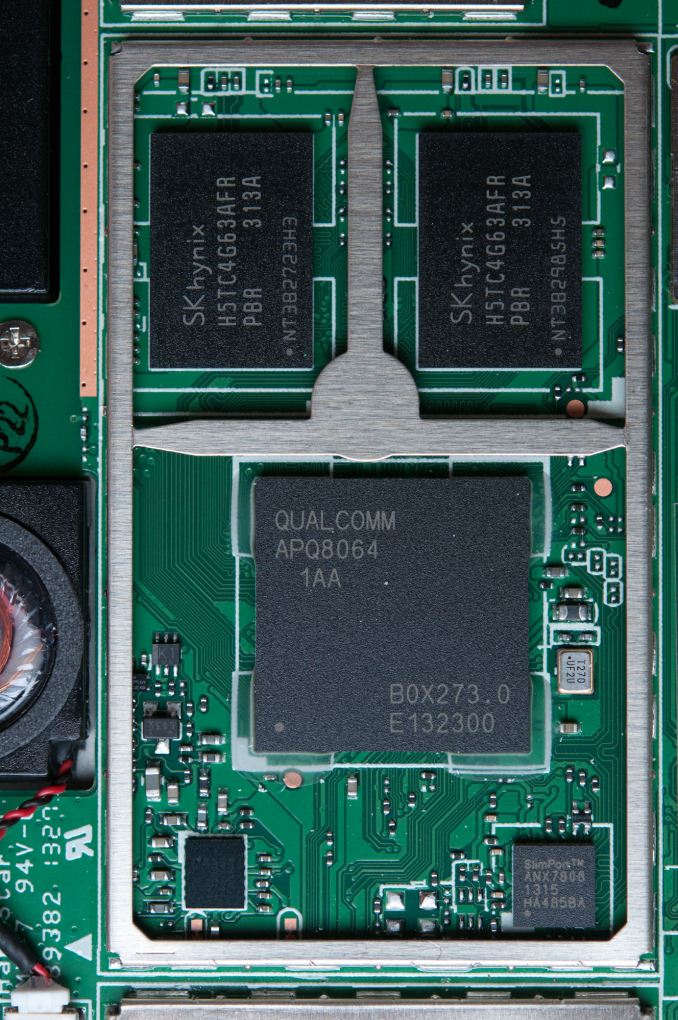














252 Comments
View All Comments
charleski - Saturday, July 27, 2013 - link
Great review Brian. I'm just interested to know where you got the info on the APQ8064–1AA having Krait 300 cores. Searching for that part no just turns up references to your tweet and this article.Brian Klug - Saturday, July 27, 2013 - link
There's no public disclosure I can link you to about it, however internal documentation and confirmation I got from PR acknowledge that APQ8064-1-AA (or APQ8064-1AA as I wrote it for simplicity reasons) is 4xKrait 300 at 1.5 GHz with DDR3L support.-Brian
karasaj - Saturday, July 27, 2013 - link
So my local best buys were selling them early and I picked one up last night :D I haven't played with it much but this mini review makes me extremely glad that I did!MarcVenice - Saturday, July 27, 2013 - link
Great review. I don't see how some reviewers don't think this isn't an epic tablet. I mean, it's beating the iPad Mini on all fronts, and it will probably be equal to the new iPad Mini, except for build quality, but the new iPad Mini will cost an arm and a leg compared to the Nexus 7 (2013).Compared to most other 7" android tablets, it's simply a steal? I'm not sure if I want to upgrade from my current Nexus 7, but if I didn't have one yet, I definitely would.
kascollet - Saturday, July 27, 2013 - link
This new Nexus is great, for sure, but honestly, I don't see myself replacing my ipad Mini with it for one unique reason : the size of the screen. Even if the low ppi screen of the Mini is not that great, it's still way larger (30 square inches vs 22) and as I mainly use it to browse the web, it's a no brainer. I guess many customers feel the same when they see both devices side by side. Then there is the ecosystem, again immensely better on every iPad.I seriously hope Apple upgrades the Mini with modern and powerful components like Google just did with the Nexus, but whatever pieces they choose, any iPad with this 4:3 ratio screen is better to me than a 16:10 below 9" Android slate.
MarcVenice - Saturday, July 27, 2013 - link
Hmm yeah got me there, screen real estate is bigger on the mini, but I find that I mostly use the tablet for reading or watching shows/movies, and then it's not a problem at all, in fact it's a plus since with 4:3 you get the black bars.As for eco-system, well, since I mostly read / watch shows, I'm not to bothered. But it should also be picking up, with ipad sales slowing down, and android-tablets grabbing a larger marketpercentage, should mean more devs making android tablet-apps. Of course the fact that there's so many resolutions out there will make it harder (and slower going).
doobydoo - Thursday, August 1, 2013 - link
The Nexus loses out on just about every single on screen GPU benchmark. Yes, I know this is partly because it has to push more pixels but it DOES have to push more pixels so real world FPS is much slower on this Nexus 7 - even though it's 9 months newer.I have no idea why you think it wins in every category, and it also has a smaller screen despite being larger in terms of volume, and we've yet to compare battery life.
nerd1 - Saturday, July 27, 2013 - link
I don't think 7.9" 1024*768 screen is any better than 7.1" 1920*1200 screen to browse the web.kascollet - Saturday, July 27, 2013 - link
To each his own of course, by size matters very much to me.The iPad Mini is not much bigger than the N7, but the screen is.
http://goodereader.s3.amazonaws.com/blog/uploads/i...
guidryp - Saturday, July 27, 2013 - link
I definitely prefer the iPad Mini screen size/aspect.But owning neither today, there is no way I could consider buying a Mini, with the new Nexus 7 on the market, that is pretty much better in every other way.
If Mini Retina fails to show up this Fall, I see Apple losing a lot more tablet market share.